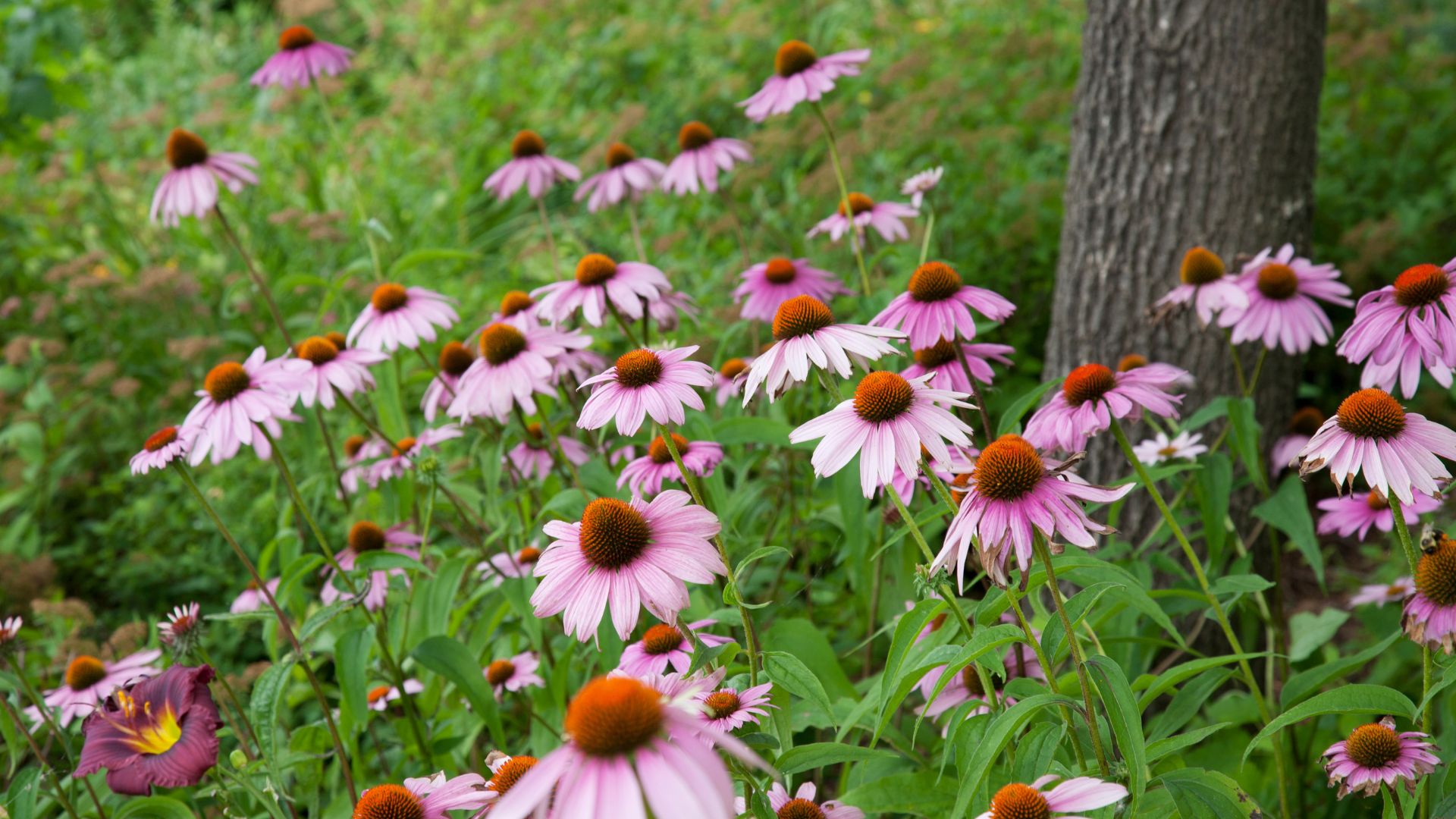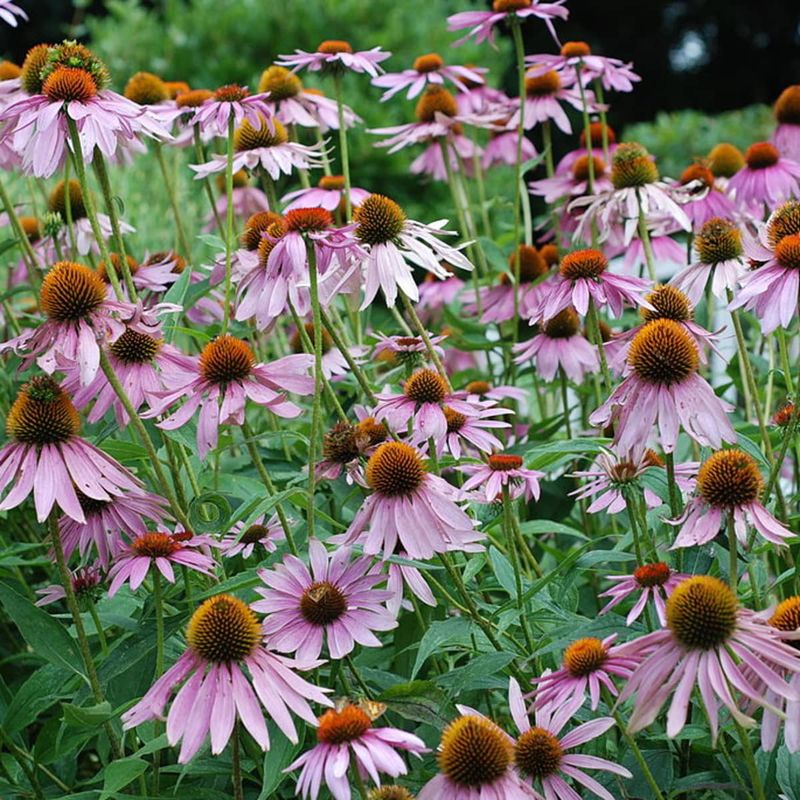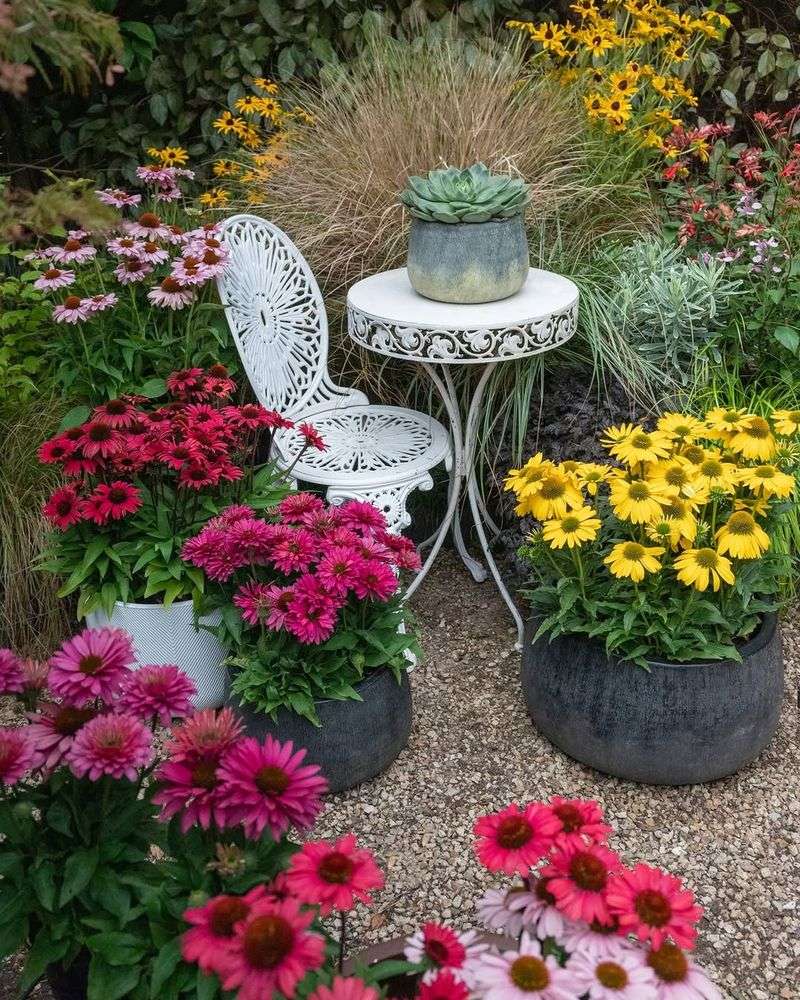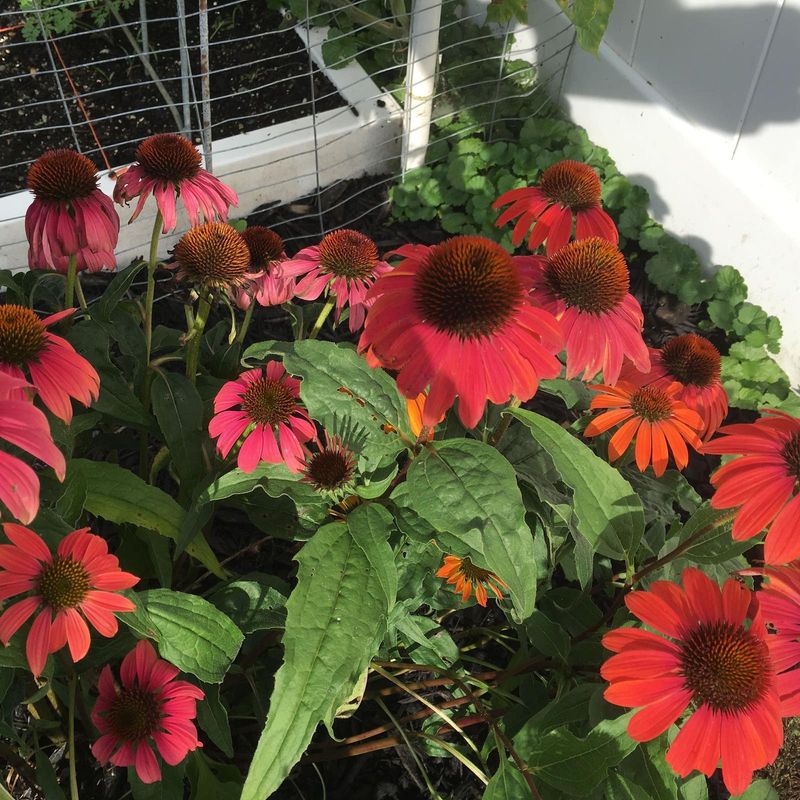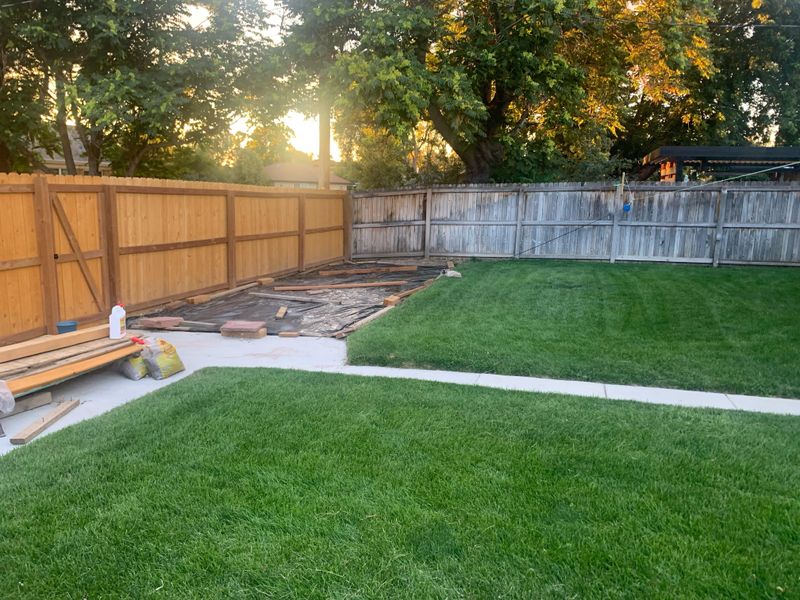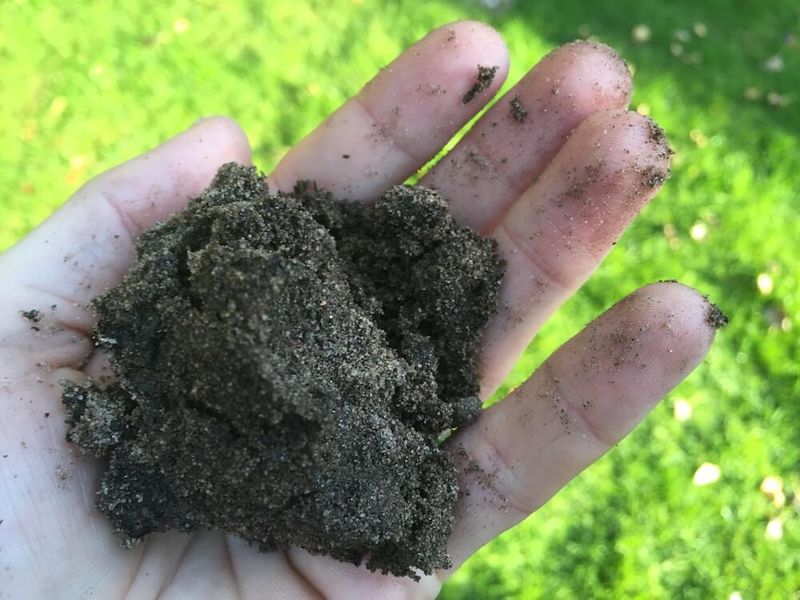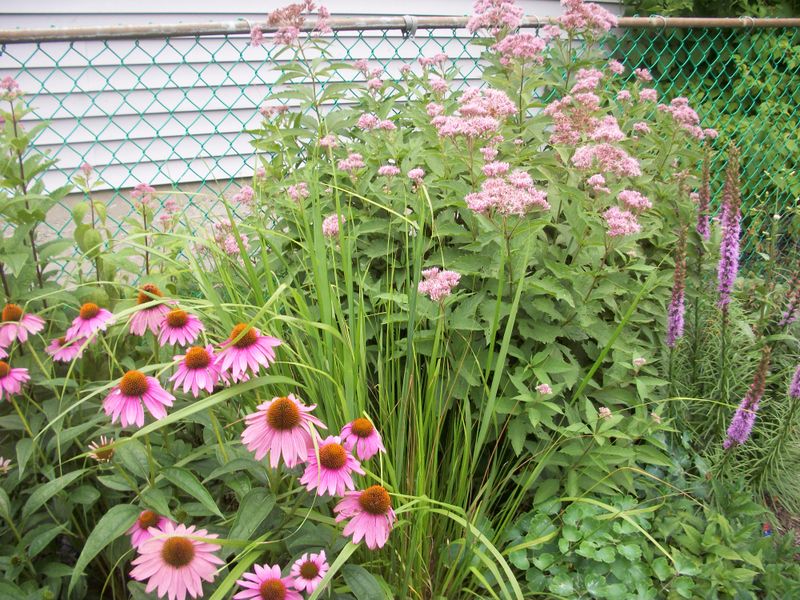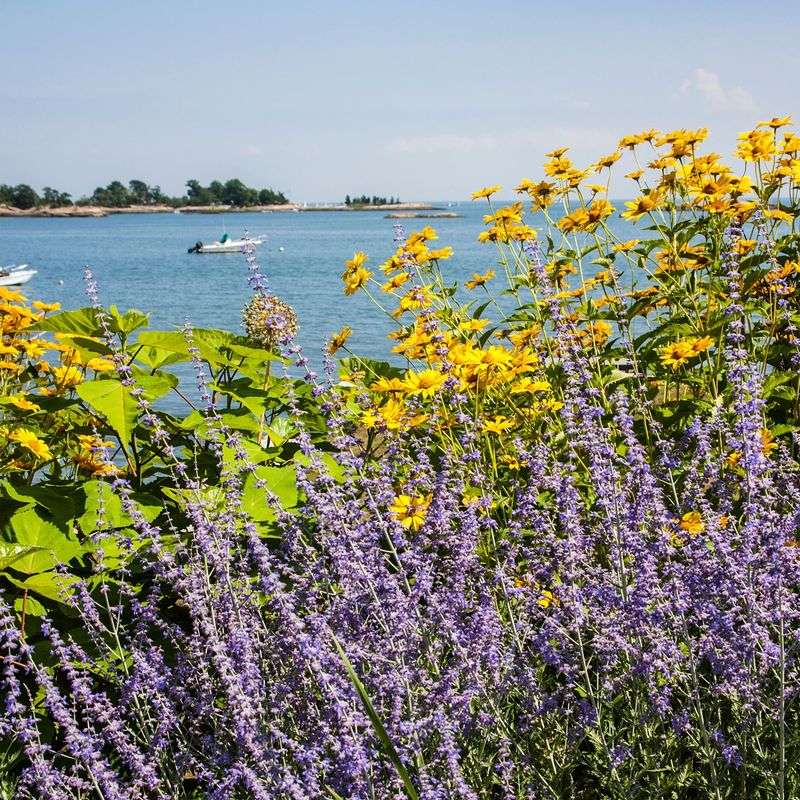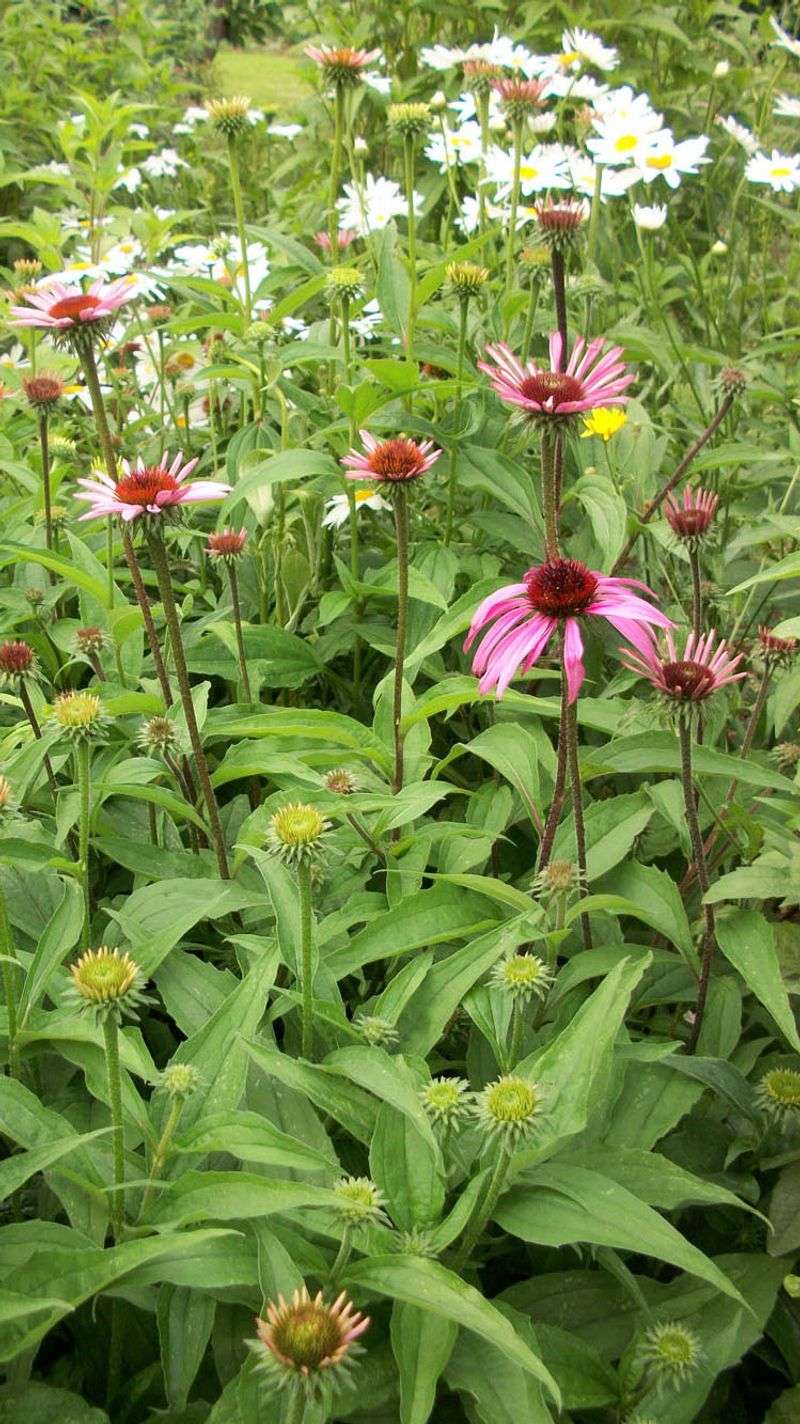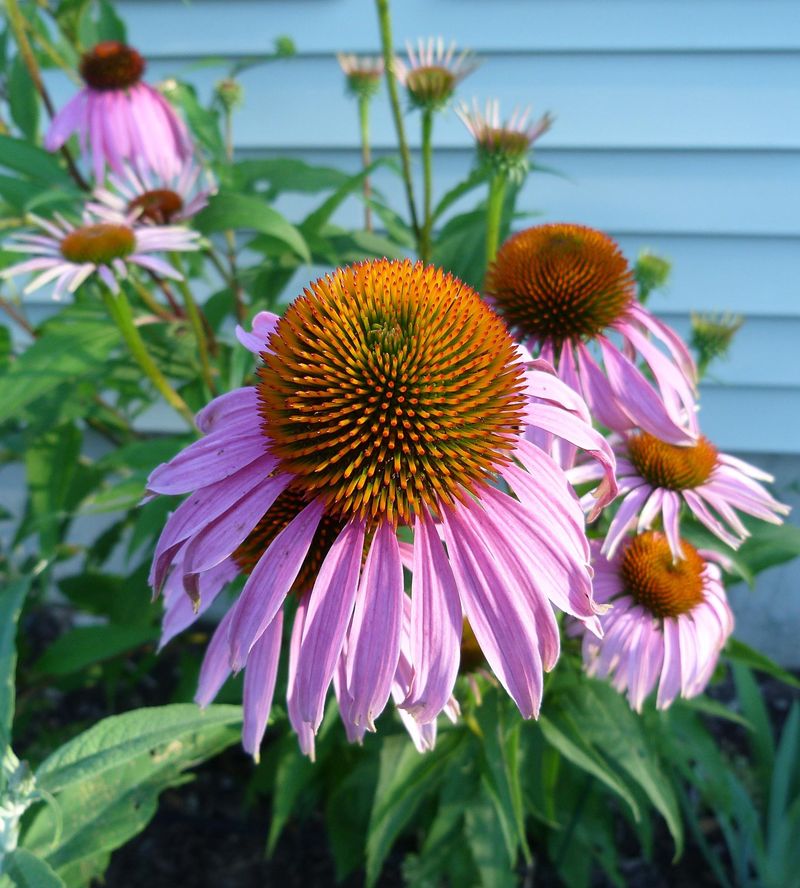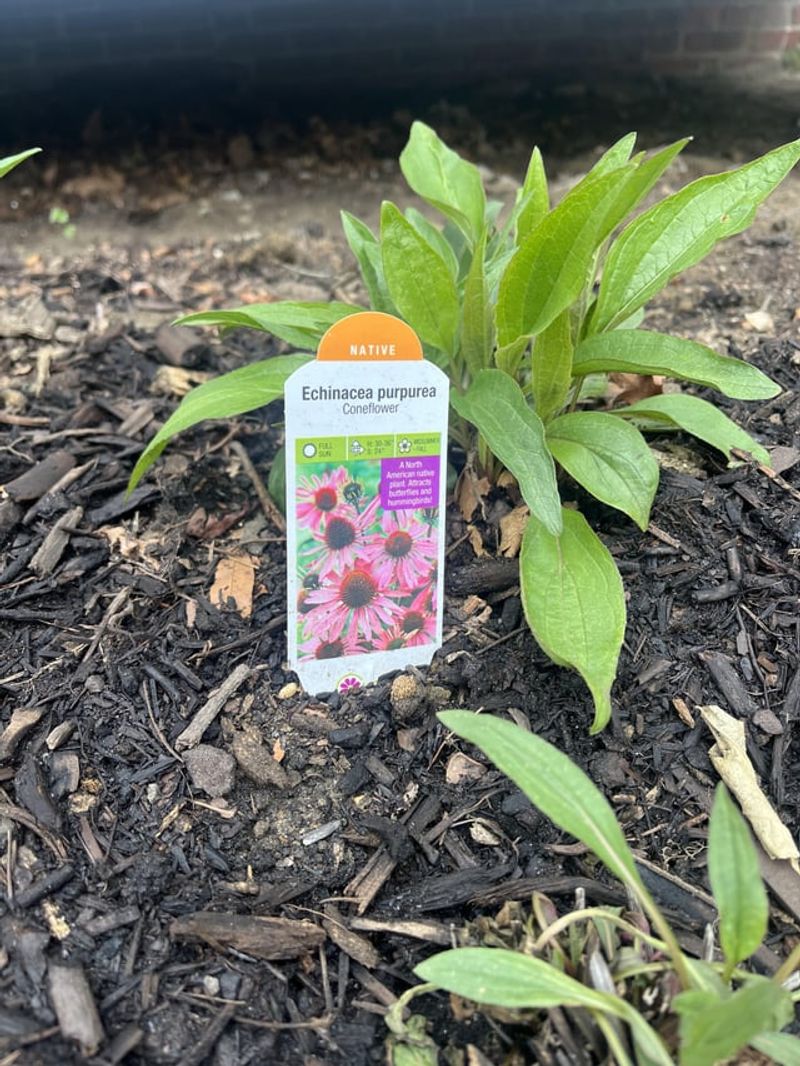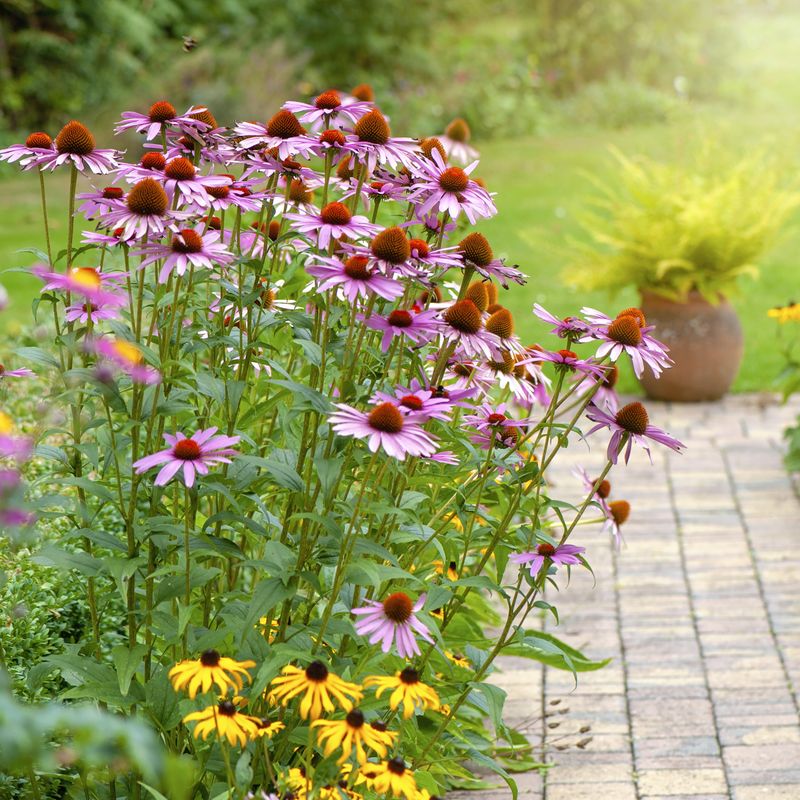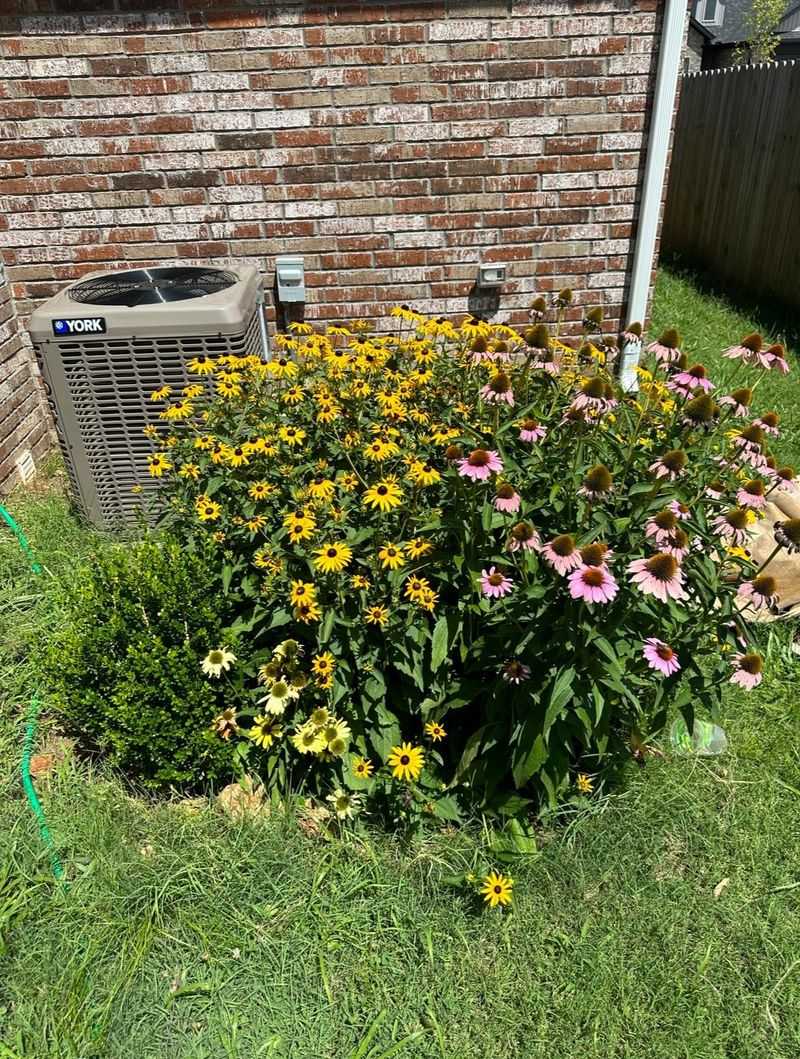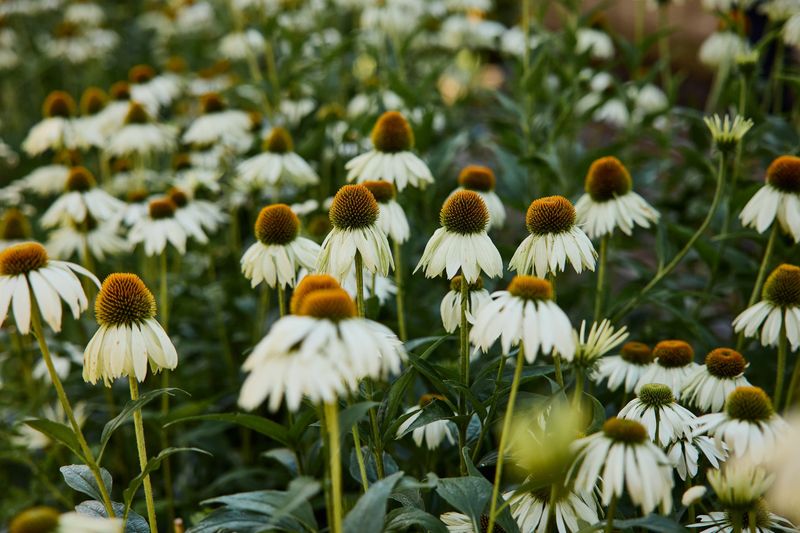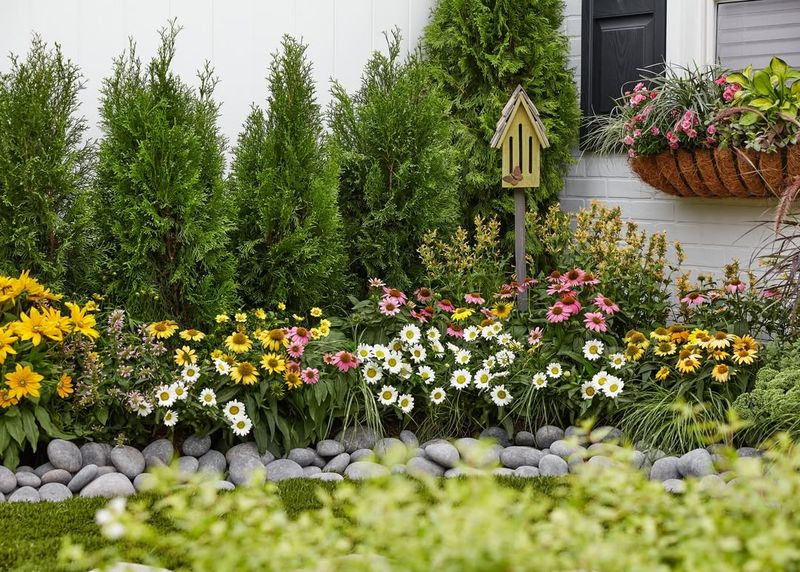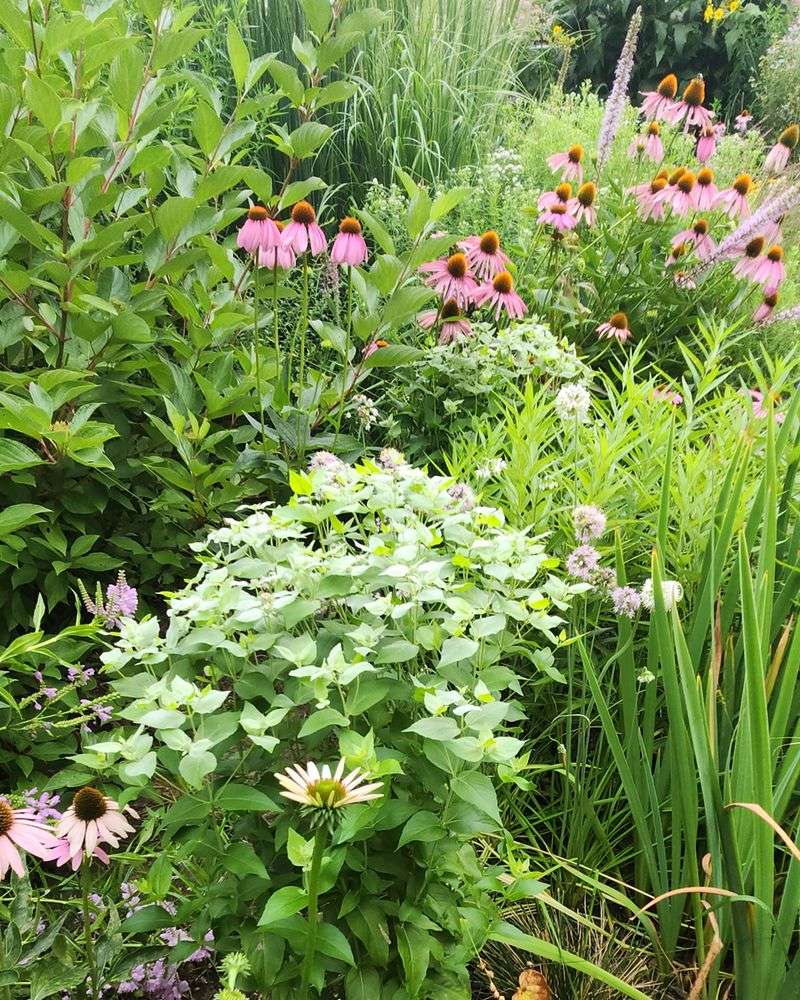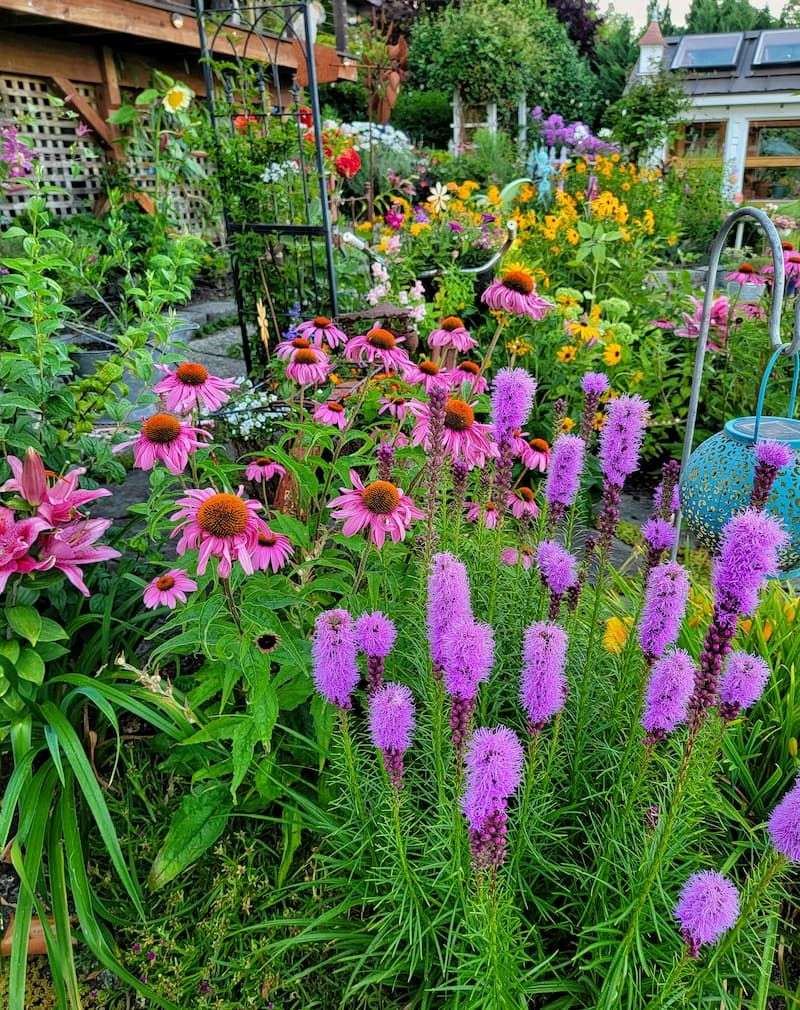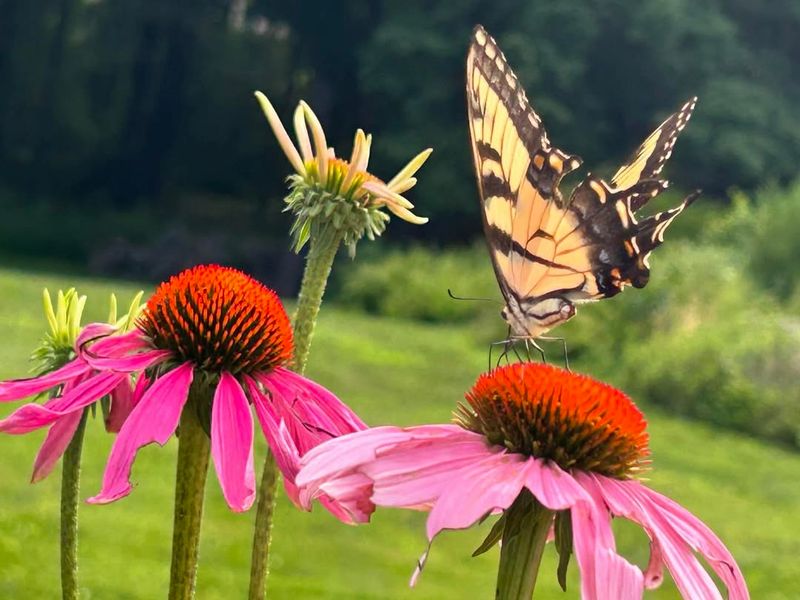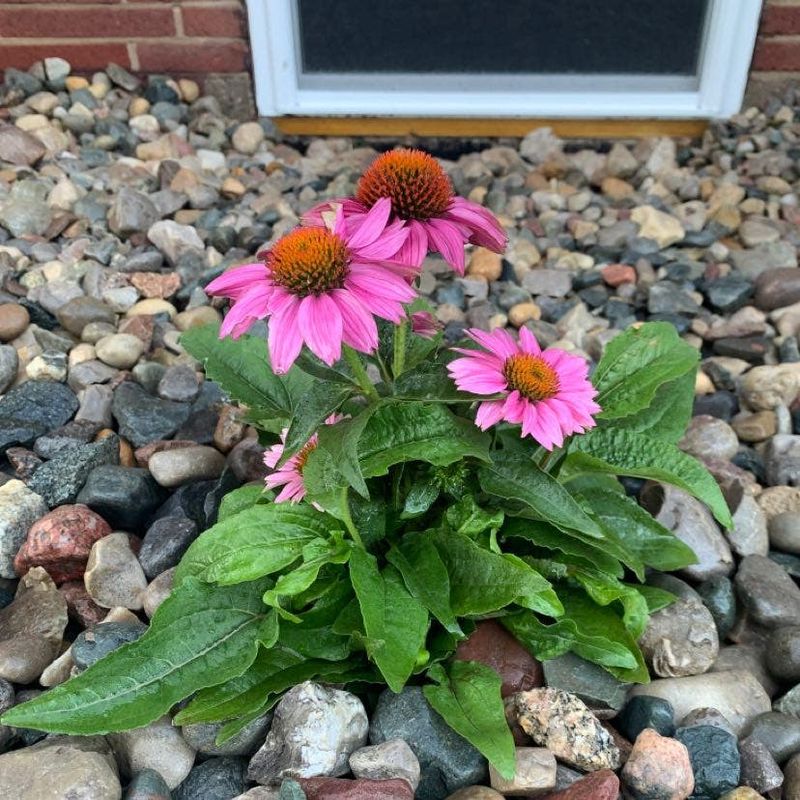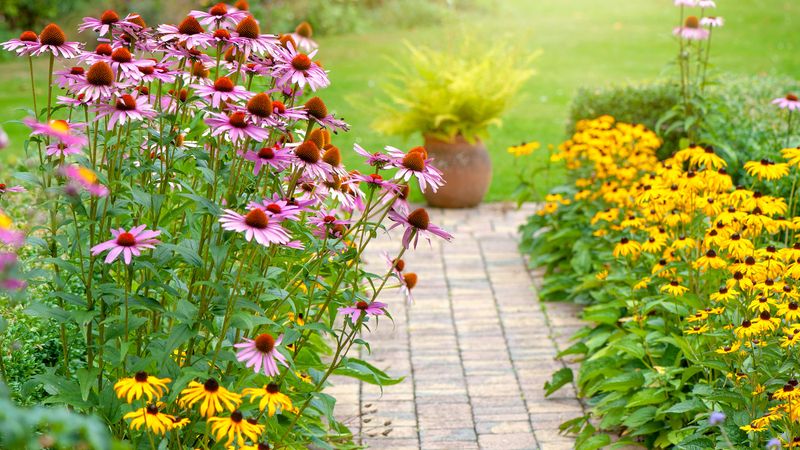I’ve made my share of mistakes with coneflowers—planting them in spots that looked fine at first but ended up being totally wrong. These tough-looking perennials actually have some pretty specific preferences.
Put them in heavy, soggy soil or too much shade, and they’ll sulk instead of shine. I’ve learned the hard way that ignoring their needs means fewer blooms and struggling plants.
But when you get the location right—full sun, well-drained soil—they absolutely thrive. Let’s look at which spots to skip and where coneflowers can truly show off.
1. Heavily Shaded Areas
Sun-loving by nature, coneflowers struggle when planted in shadows. I’ve watched them stretch awkwardly toward light sources when positioned under trees.
The stems grow lanky and weak, producing fewer blooms that lack the vibrant colors you’d expect. Without adequate sunlight, the plants become more susceptible to diseases too.
My neighbor tried growing them beneath her maple tree for three summers before giving up. The poor things never produced more than two or three sad-looking flowers each year.
2. Waterlogged Soil
Standing water spells disaster for coneflowers. Their roots quickly rot in soggy conditions, turning mushy and brown within weeks.
Low-lying areas that collect rainwater create death traps for these prairie plants. You’ll notice yellowing leaves first, followed by a complete collapse of the plant structure.
After losing a whole bed to a particularly rainy spring, I learned my lesson. Now I check drainage by digging test holes before planting anything in that family.
3. Cramped Container Gardens
Pots seem convenient but rarely provide enough space for coneflowers’ extensive root systems. The confined environment stunts their growth and limits flowering potential.
Most containers dry out too quickly for these medium-thirsty plants. Even with regular watering, potted coneflowers often look stressed by midsummer.
I tried growing them in a gorgeous ceramic planter on my patio. Despite daily attention, they remained half the size of their in-ground cousins and produced maybe a third of the blooms.
4. Against House Foundations
Foundation plantings expose coneflowers to harsh conditions. The reflected heat from walls creates temperature extremes that stress even these heat-tolerant plants.
Soil near foundations often contains construction debris, lime leaching from concrete, and less organic matter. These factors combine to create a hostile growing environment.
The drip line from roofs can alternatively flood or completely miss these areas during rain, creating irregular watering patterns that coneflowers hate.
5. Lawns And Turf Areas
Grass competes aggressively for water and nutrients, overwhelming young coneflower plants before they establish. The constant mowing around them damages stems and disturbs their growth pattern.
Turf management practices like fertilizers and herbicides often harm coneflowers. What keeps your lawn green might actually be toxic to these native perennials.
Last year I spotted some volunteer seedlings in my lawn edge and tried preserving them. Despite creating a grass-free zone around each one, none survived the summer competition.
6. Highly Alkaline Soil
Soil pH above 7.5 locks up iron and other nutrients coneflowers need. The resulting chlorosis turns leaves yellow while veins remain green—a telltale sign of nutrient deficiency.
Alkaline conditions are common in areas with limestone bedrock or where concrete has influenced the soil chemistry. Plants might establish initially but decline over seasons.
A garden center once told me coneflowers would grow anywhere. After soil testing revealed my backyard’s 8.0 pH, I understood why mine always looked sickly despite perfect sun exposure.
7. Too Close To Aggressive Plants
Mint family members, ornamental grasses, and other spreaders quickly overrun coneflowers. The competition for resources leaves little room for these modest growers to establish properly.
Rhizomatous plants send underground stems right through coneflower root systems. Before you know it, your purple beauties have disappeared beneath more aggressive neighbors.
My beautiful Russian sage completely engulfed three coneflowers in a single season. By the time I noticed, only one sad stem remained poking through the silvery foliage.
8. Coastal Salt Spray Zones
Oceanfront gardens expose plants to salt-laden winds that damage coneflower foliage. The tiny salt crystals act like microscopic razors, cutting leaf surfaces and causing dehydration.
Salty soil conditions along coastlines interfere with normal water uptake. Even irrigation can’t overcome the osmotic pressure problems in these environments.
During a beach house stay, I noticed all the successful gardens featured salt-tolerant natives instead. The few properties with coneflowers had planted them behind windbreaks, away from direct ocean influence.
9. Beneath Tree Canopies
Trees create multiple problems beyond just shade. Their extensive root networks compete for every drop of water and nutrient in the soil, leaving little for understory plants.
Falling leaves, nuts, and fruits can smother the crown of coneflowers during autumn. This organic debris holds moisture against the plant base, promoting rot during winter dormancy.
The allelopathic compounds some trees produce actively suppress other plant growth. Walnuts are notorious for this, but many other species have similar effects on coneflowers.
10. Windy, Exposed Locations
Strong winds snap the tall, somewhat brittle stems of mature coneflowers. Once flowering begins, the top-heavy blooms act like sails, catching every breeze and stressing the plants.
Constant air movement increases water loss through leaves. Even drought-tolerant varieties struggle to maintain adequate hydration in perpetually windy spots.
After watching my hilltop coneflowers repeatedly break during summer storms, I relocated them to a more sheltered location. The difference in plant health was remarkable by the following season.
11. Over-Mulched Beds
Excessive mulch suffocates coneflower crowns and prevents proper air circulation. When organic materials press against the stems, they create perfect conditions for fungal diseases and rot.
Deep mulch layers also become havens for slugs, voles, and other pests that damage plants. These creatures hide in the moist environment during day and feed on your plants at night.
I once followed a garden magazine’s advice to apply 4 inches of mulch for weed suppression. By mid-July, half my coneflowers showed stem rot at the soil line—a costly mistake.
12. Frost Pockets And Cold Air Drains
Low areas where cold air settles create challenging microclimates. These frost pockets experience temperature extremes that damage emerging coneflower growth in spring.
The freeze-thaw cycles common in these locations heave plants partially out of the ground. This root exposure leads to desiccation and often death before summer arrives.
My garden has a slight depression that consistently kills perennials. After losing coneflowers there three years running, I finally recognized the pattern and now reserve that spot for late-emerging plants instead.
13. Heavily Fertilized Areas
Excessive nitrogen promotes lush foliage at the expense of flowers. Coneflowers grown in over-fertilized soil develop weak, floppy stems that can’t support their blooms properly.
High phosphorus levels, common in many garden fertilizers, disrupt the beneficial fungal relationships coneflowers naturally form with soil microorganisms. This interference reduces their drought tolerance.
The vegetable garden border seemed like a convenient spot for my coneflowers until I realized they were getting too much fertilizer runoff. They grew impressively tall but flopped completely after every rain.
14. Recently Disturbed Soil
Newly worked ground lacks the soil structure coneflowers prefer. Construction sites, fresh landscape beds, and recently tilled areas need time to develop microbial communities that support plant health.
Disturbed soils often drain poorly and compact easily. These conditions stress root systems and limit oxygen availability to plant tissues.
The coneflowers I planted immediately after our home addition looked sickly for two full seasons. Only in the third year, once the soil had stabilized, did they begin to show their typical vigor.
15. Formal, Heavily-Maintained Gardens
Coneflowers have a naturally informal growth habit that clashes with strictly maintained formal designs. Their tendency to self-seed creates “messiness” that requires constant intervention in structured gardens.
The deadheading needed to keep formal gardens tidy removes the seedheads birds rely on through fall and winter. This eliminates one of the main ecological benefits of growing these native plants.
My attempts to incorporate coneflowers into a geometric knot garden taught me a lesson in plant selection. Their wild nature fought against every attempt at containment.
16. Prairie-Style Gardens
Native plant communities recreate coneflowers’ natural habitat. Among complementary prairie species, they establish deep roots that access moisture even during drought periods.
The combination of grasses and flowering perennials mimics their evolutionary environment. This ecological approach reduces disease pressure and eliminates the need for chemical interventions.
My front yard meadow garden contains five coneflower species that return reliably each year. They’ve formed stable populations that increase gradually without becoming invasive—exactly what you want from these beautiful natives.
17. Raised Beds With Good Drainage
Elevated planting areas provide the perfect combination of moisture control and root development space. The improved drainage prevents the root rot issues that plague coneflowers in heavier soils.
Raised beds warm up faster in spring, giving coneflowers an early start on seasonal growth. This extended growing period translates to stronger plants with more abundant blooms.
The 18-inch raised beds along my driveway host the healthiest coneflowers in my garden. The combination of perfect drainage and full sun exposure creates ideal conditions for these prairie natives.
18. Butterfly Gardens
Pollinator-focused plantings provide ideal companions that don’t overwhelm coneflowers. The diverse nectar sources attract beneficial insects that help control potential pest problems naturally.
Butterfly garden maintenance aligns perfectly with coneflower needs—minimal intervention and tolerance for some natural disorder. The seasonal cleanup schedule respects their winter wildlife value.
Since establishing my backyard butterfly sanctuary, the coneflowers have flourished alongside monarda, liatris, and asclepias. The ecological balance seems to strengthen all the plants while supporting dozens of pollinator species.
19. Rock Gardens With Morning Sun
Stone elements store heat that moderates temperature fluctuations around coneflower roots. The thermal mass creates a microclimate that extends the growing season at both ends.
Rock gardens typically feature excellent drainage combined with pockets of rich soil—precisely what coneflowers evolved with in their native habitats. The stones also help suppress competing weeds.
The sloped rock garden on our property’s east side has become coneflower heaven. They receive bright morning sun but avoid the harshest afternoon heat, resulting in compact plants with exceptional flowering.
20. Border Edges With Full Sun
Positioning along pathways or garden borders provides excellent air circulation. This placement reduces humidity around foliage, minimizing fungal disease problems common in denser plantings.
The edge location allows coneflowers’ distinctive silhouettes to stand out against lower plantings. Their architectural quality becomes a focal point rather than getting lost in the middle of beds.
Lining my garden path with coneflowers was one of my better design decisions. Visitors can appreciate their details up close, and maintenance is simple with clear access from the walkway side.

